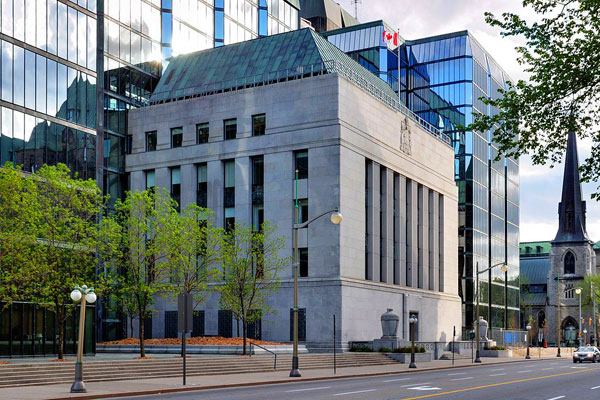Bank of Canada says next move likely an interest rate hike
6/12/2017
| SHARE
Posted in Mortgage Interest Rates by Vanguard Realty | Back to Main Blog Page

The Bank of Canada offered its strongest signal yet that it’s ready to raise interest rates as the economy gathers steam, in surprise comments that sent the Canadian dollar and bond yields soaring.
In a speech Monday, Senior Deputy Governor Carolyn Wilkins highlighted how the nation’s recovery is broadening across regions and sectors, giving policy makers “reason to be encouraged.” She downplayed worries about Toronto’s housing market and said policy makers need to keep their eye on the future evolution of growth, not only current economic conditions.
“As growth continues and, ideally, broadens further, Governing Council will be assessing whether all of the considerable monetary policy stimulus presently in place is still required,” Wilkins said in Winnipeg, Manitoba. “At present, there is significant monetary policy stimulus in the system.”
Wilkins said policy makers will be focusing on the data and talking to “many people” ahead of the next interest-rate decision on July 12.
The remarks are an indication policy makers anticipate the next rate move will be higher as momentum has shifted after two years of pain from a slump in oil prices. It’s also effectively a rebuke of pessimists betting on a disorderly unwinding of Toronto’s housing bubble that has left the Canadian dollar one of the worst performing currencies this year.
The Canadian dollar extended gains after Wilkins’s comments, appreciating 0.9 percent to C$1.3350 per U.S. dollar at 2:04 p.m. in Toronto, the steepest increase since March and the biggest advance among Group-of-10 peers on Monday. The gain helped turn the loonie’s year-to-date loss against the greenback into a gain.
As early as January, Governor Stephen Poloz had been talking about the possibility of another rate cut, after lowering the key rate twice in 2015 to 0.5 percent.
Swaps trading suggests investors are placing an 11 percent probability of a rate increase next month, and a 56 percent chance by the end of this year. On Friday, those probabilities were 5 percent and 30 percent. The central bank hasn’t raised interest rates since 2010.
Bond Sell-Off
The comments also sparked a sell-off in Canada’s federal government bonds, pushing the yield on two-year notes up seven basis points, the steepest rise since December, to an almost three-month high of 0.81 percent. The rate on five-year securities rose above 1 percent for the first time in three weeks.
“Markets have barely priced in any real risk of a rate hike this year and will need to adjust,” said Shaun Osborne, chief foreign-exchange strategist at Bank of Nova Scotia in Toronto. “This is quite a change in messaging on the face of it - and likely brings forward expectations for Bank of Canada tightening just at the time when the market is doubting how much more the Fed will move.”
Wilkins said encouraging signs included the fact that more than 70 percent of industries are growing, the labor market has improved and demand in energy-dependent provinces is strengthening. In fact, the drag from the oil price shock -- the reason for two rate cuts in 2015 -- is done, according to Wilkins.
“The adjustment to lower oil prices is now largely behind us, and we are looking for signs that the sources of growth are broadening across sectors and regions,” Wilkins said. “The signs are encouraging.”
As an analogy, Wilkins likened monetary policy to a car slowly braking before a traffic light.
“If you saw a stop light ahead, you would begin letting up on the gas to slow down smoothly,” she said. “You do not want to have to slam on the brakes at the last second. Monetary policy must also anticipate the road ahead.”
Wilkins said it was too early to tell how measures by the Ontario government to cool Toronto’s housing market will impact activity and prices, citing the rebounding Vancouver market as an example. If Toronto’s market performs better than expected, that would be a boost for household spending and another driver of growth.
“Given we expect household spending to slow somewhat, it could surprise us and provide an unexpected boost to growth in the near term,” Wilkins said.
Other Details
Diversity of economic growth “helps support strong and sustained overall growth.” Risks to the economy include potential changes in U.S. policies, faster-than-expected household spending. Core inflation measures have “drifted down in recent quarters,” consistent with lagged effects of slack in the economy, she said. “Other indicators also point to ongoing spare capacity,” such as wage gains, Wilkins says.
First quarter growth rate of 3.7 percent was “pretty impressive.” Bank of Canada modeling shows broadening in provincial activity in 2017. Exports still remain a disappointment. Gains in employment spreading across the country.
Source: Bloomberg
Bank of Canada, Bank of Canada Benchmark Rate, Canada, Mortgage Consumers, Mortgage Rates, Mortgage Rates Canada, Mortgage Trends, Mortgages & Real Estate, Variable Rate Mortgages

Thinking of buying or selling a property, or have a question regarding the real estate market? Fill out the form below and we'll get back to you promptly.
